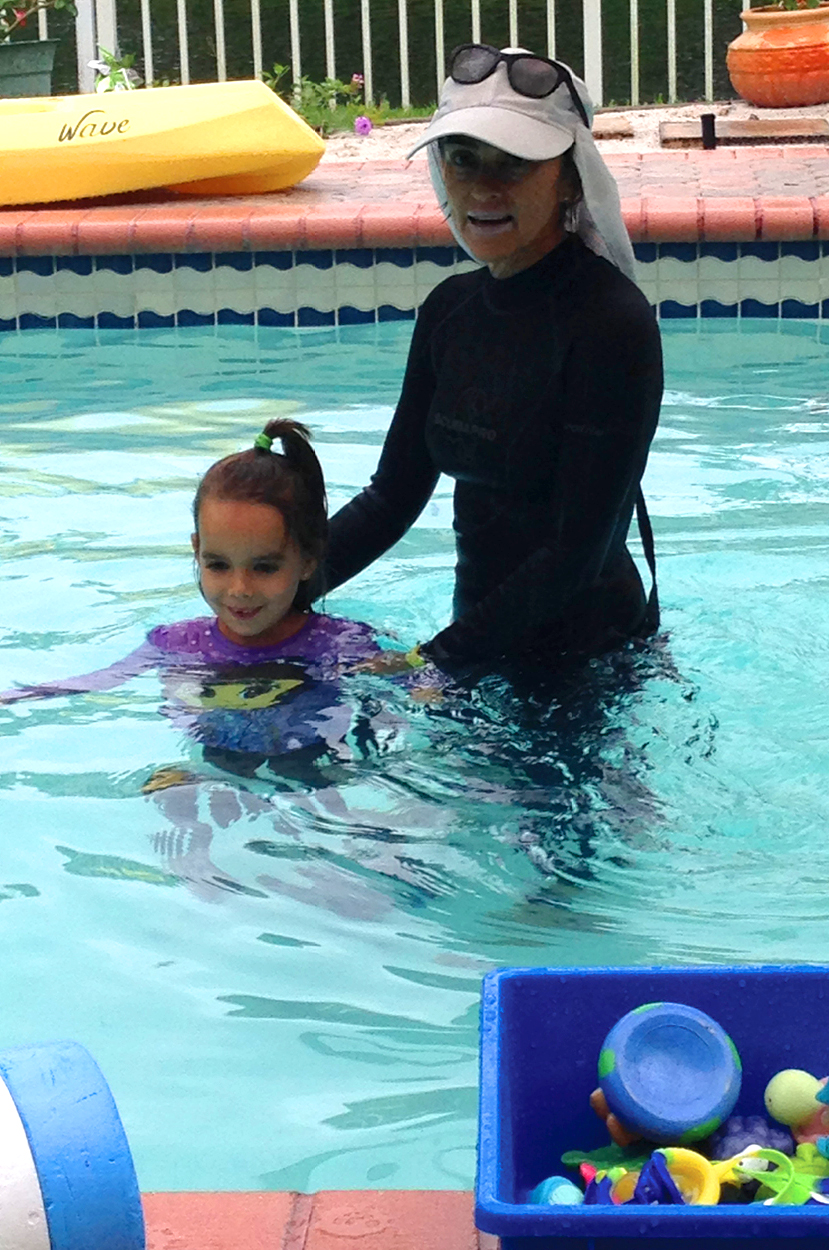Our Swimming Basics course for children focuses on safety and concludes with a session that teaches kids what to do in case of accidental fall in the water.
Swimming Basics is the first step to a successful relationship with water, while most often taught to babies and toddlers, we can customize this course for older kids too. In this course children learn basic water safety, floating, breathing, how to jump in the pool and swim back to the edge and what to do in case of an accidental fall in the water. The conclusion of the course involves a set of pretend-scenarios of accidental falls in the water which helps children understand what happens in these situations. Following are the answers to some of the most popular questions we get asked about this class.
How do children dress for the Swimming With Clothes Class?
For this class children are asked to wear long pants, shirts with sleeves, sneakers and socks, and we suggest they wear their regular bathing suit underneath so that they may continue to swim freely once the activity is finished.
When are children ready for this class?
Kids are ready to do the Swimming With Clothes Class when they:
- Are able to float without help or prompting from the teacher
- Are able to swim across the pool in various ways such as arms in front with leg kicks (modified freestyle), froggy style (modified breast stroke), back stroke with arms in the water, and mermaid or dolphin styles. Throughout their swim they can—and are encouraged to—stop and take a floating rest before they continue swimming.
- By this stage of the program children also have learned to jump into the pool safely from different heights, float on their backs, or turn in the water to swim towards the wall.
How does the class start?
In this class children enter the water walking into the shallow end of the pool slowly so they can get used to the feeling and added weight of wet clothes on their bodies. Once they are fully in the water they begin to swim, float and realize that even though wet clothes feel strange, they are still able to move around. Later we move to the deep end of the pool where we test the same motions, and we also practice how to call for help from the water.
Do children experience a simulated accidental fall?
Yes. Once they have had enough time moving in the water fully clothed and feel safe enough to move around, we set up a scenario where the children “accidentally fall” (while the teacher is not in the water). In this way they get to practice what to do after a real fall and how to react in order to turn around and swim to the wall. In another scenario we practice a fall from a higher ground, so they can experience a stronger entrance into deeper water, which helps them understand they can swim up, come out and float, regardless of how high they have fallen from, or how deep the pool is at a given end.
What do they do about shoes?
In this class we teach children how to remove certain types of shoes in the water without using their hands in order to remain in a floating position. This is helpful so that they can learn that after being in the water for a while, if their shoes become heavy, they are able to take them off, and that it is ok to loose them, in fact being without shoes allows greater freedom of movement in the water.
Why design such a realistic class / accidental fall test scenario?
The reason why we have designed this class in such a realistic manner is to help children understand that if they ever experience an accidental fall into the water from a boat, jetski, speed boat, high dock, etc, while they might feel slightly disoriented at first, they can quickly come out, float and call out for help. Even though these situations can be scary, our goal is for kids to know that everything they have practiced and learned in the Aquadventure Swimming Basics Program can be applied throughout many different situations in real life.











